 Image search results - "boat" Image search results - "boat" |

Well-wishers look on as rowers embark for the race taking place at the same venue where the rowing competition was held at the 1964 Tokyo Olympics.
|
|
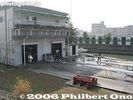
Seta Rowing Club's 2-story clubhouse located in Otsu, Shiga Prefecture. The club is a registered NPO. The club is named after Seta River at the southern tip of Lake Biwa. Regattas are also held on the river, Lake Biwa's sole outflowing river.
|
|

PR poster designed by Tetsuo OshiroPoster for the race.
京都大学ボート部OBの尾城徹雄様に作成したポスター。大学内や大津市石山商店街などで張り出された。
|
|

Being my first regatta, I was at first daunted by the rowing terminology for the different types of boats.
|
|

Finish line end of the 2000-meter Toda Boat Course.
|
|

Seta Rowing Club's clubhouse. Boats are stored on the bottom floor, while the 2nd floor has office space, ergo machines, meeting room, locker room, etc. Web site here
|
|

Carrying back a single sculling boat
|
|
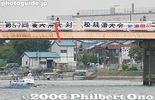
Karahashi Bridge as the starting point for alumni races
|
|

End of the Toda Boat Course, near the 2000-meter finish line.
|
|
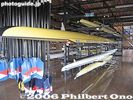
Oars and boats stored on the bottom floor. The club offers 2-hour rowing lessons on Sundays during May to Nov. Address: 6-1 Ogaya, Otsu, Shiga 520-2144 Japan. Phone/Fax: 077-545-9961, Email: info@setarc.jp
|
|

The place was not as crowded as you would think.
|
|

Housing for visiting rowing teams whose school flags are displayed.
|
|
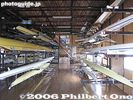
Many boats are made in Italy.
|
|

Rowing team from Nagahama
|
|

Kyoto Univ. in dark blue T-shirts
|
|

Boat landing near finish line.
|
|
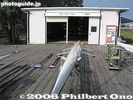
Right across the clubhouse is the Annex boat house.
|
|
|

Hosei Univ. cheering section on the first day (Aug. 24, 2006) of the 33rd All-Japan Intercollegiate Rowing Championships.
|
|
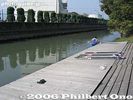
Club's boat dock. This narrow canal leads to Lake Biwa.
|
|

Azaleas in full bloom along the lake edge
|
|

Finish line 300 meters later
|
|

第33回全日本大学選手権大会・第46回オックスフォード盾レガッタ
|
|
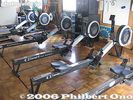
Rowing exercise machines called "ergometers" or "ergo" or "indoor rower." In Japan, they call it "ergo." エルゴThe machine measures the energy you expend rowing. Also measures how fast and far you rowed if you were on water. They even have ergo rowing contests which is a sport itself.
|
|
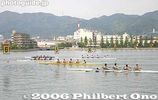
Four-man boat race. There were also foreign rowers from international schools.
|
|

Tokyo Univ. (Todai) crew return to land after a race
|
|

Numerous college and corporate rowing clubs have dormitories along the boat course.
|
|
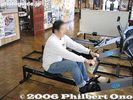
The rowing lesson starts with an ergo workout.
|
|

Cheering section for Nagahama
|
|
|

Notice board for the race schedule and results.
|
|
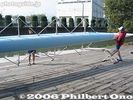
Carrying the boat.
|
|

About the song and rowing route... この歌について(日本語解説)Shiga Prefecture's most famous and beloved song is called Biwako Shuko no Uta (琵琶湖周航の歌) or "Lake Biwa Rowing Song." I have rendered this song into both pictures and English, according to my own imagination and interpretation.
Please see this page for a full explanation: https://photoguide.jp/txt/Lake_Biwa_Rowing_Song
First composed in 1917 by a bunch of college students from Kyoto, the song has been recorded by many famous Japanese singers and groups. In 1971, it became a major nationwide hit with singer Tokiko Kato's rendition. Today, the song remains a favorite among choir groups in Japan, and a choir singing contest is held for the song every June (since 1997) in Imazu, the birthplace of the song in the northwestern corner of Lake Biwa.
Shiga Prefecture also has stone monuments dedicated to each of the six verses. There's even a museum (Biwako Shuko no Uta Shiryokan) in Imazu dedicated to the song. Okaya city on the shores of Lake Suwa in Nagano Prefecture, the birthplace of the song's composer, Taro Oguchi (小口太郎) (1897-1924), also has a song monument and bronze statue of him.
|
|
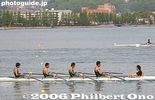
Four-man race with the cox at the stern
|
|

Verse 1 Song Monument, Otsu (Mihogasaki). In 1973, this was the first monument built for the song. The song's first and most famous line, "Ware wa Umi no Ko" is written. 一番の歌碑。大津市三保ケ崎。This monument is near the boat house in Mihogasaki, a stone's throw from Hama-Otsu.
われは湖の子 さすらいの
旅にしあれば しみじみと
のぼる狭霧や さざなみの
志賀の都よ いざさらば
Ware wa Umi no Ko, sasurai no
tabi ni shiareba, shimijimi to
Noboru sagiri ya, sazanami no
Shiga no Miyako yo, iza saraba
|
|

June 9, 2007. Hula dancers rush to Pukari Sanbashi Pier where the Hokule'a canoe is to dock. ぷかりさん橋
|
|

On June 16, 2007, Imazu marked the 90th anniversary of the song by organizing a boat cruise on Lake Biwa and other events. Omi-Imazu Station had a sign directing guests to Imazu Port. 90周年の記念「琵琶湖周航クルーズ」の近江今津駅内
|
|

On July 29, 2007, this regatta was held for the second time. It targets mainly beginner rowers. Organized by the Seta Rowing Club which seeks to have more people enjoy water sports on Lake Biwa. Seta-Karahashi Bridge was the regatta's starting line. The Lake Biwa Rowing Song CD was awarded to all the 1st, 2nd, and 3rd place winners in all five categories.
|
|

View from the spectator stand, near the finish line.
|
|

The 6th annual Lake Biwa Kaitsuburi (Little Grebe) Regatta was held on Sept. 16, 2007. This regatta is mainly for ordinary people of all ages wanting to row. Lake Biwa Rowing Course (Biwako Sotei-jo) in Otsu, Shiga. 滋賀県立琵琶湖漕艇場
|
|

Sleek rudder and steering cables
|
|

Starting line. The man says "Yoi" (Ready) then "Go."「用意」、次いで「ゴー」
|
|

Senzoku-Ike Pond has a walking path which goes almost completely around. Only 1.2 km.
|
|

Univ. of Tokyo alumni crew in light blue T-shirts
|
|

A crowd of a few hundred on hand to greet Hokule'a's arrival.
|
|

Imazu Port. A large crowd of people waiting to board the chartered boat for a 3-hour cruise on Lake Biwa to commemorate the 90th anniversary of the song, Biwako Shuko no Uta.
|
|

Sixty rowing teams (300 people) rowed in five categories, including beginner and expert rowers, ranging in age from junior high to senior citizens.
|
|

Rowers reach the finish line after 2,000 meters.
|
|

The regatta started at 9 am, and ended at about 4 pm. Omi-Ohashi Bridge in the background.
|
|
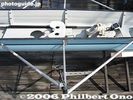
Rowing seat with moving seat on rails, fixed shoes, and outrigger for the oar.
|
|
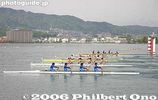
Four-man race starts with the cox at the front.
|
|

The photo above shows part of the stone monument for the first verse of the song. It reads "Ware wa Umi no Ko" (We're children of the lake). [url=http://photoguide.jp/txt/Lake_Biwa_Rowing_Song]More info about Lake Biwa Rowing Song here.[/uThis is the song's first and most famous line. The monument is in a small park near the former boathouse in Mihogasaki pier. The photo has been digitally altered (the colors are not real).
I visited and photographed all the places mentioned in the song as well as all the song monuments in Otsu, Omi-Maiko, Imazu, Chikubushima, Hikone, Chomeiji, and Okaya (Nagano). I also created some digital images to match the scenes mentioned in the song.
|
|

Senzoku-Ike Pond and cherry blossoms.
|
|

Kyoto Univ. alumni crew in dark blue T-shirts
|
|

People crowd the waterfront near Pukari Sanbashi Pier.
|
|

The "Rio Grande" cruise boat awaits at Imazu Port on a miraculously sunny day during the rainy season. 梅雨でありながら、奇跡的にこんないい天気になった。今津港
|
|

This is the boat dock where people got on and off the boats. The boats were provided by local rowing organizations. The regatta was organized by the Seta Rowing Club in Otsu.
|
|

The surroundings are not very scenic, and the water is not so clean.
|
|

The regatta was set for 300 meters. It was a hot, summer day.
|
|
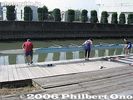
Carrying the boat to water.
|
|

Off they go
|
|

Kyoto Univ. alumni crew at start line
|
|

People crowd the waterfront near Pukari Sanbashi Pier.
|
|

Reception desk for passengers. A little over 100 people joined the cruise. クルーズの受付
|
|

A rowing team leaves the dock for Seta-Karahashi Bridge seen in the background.
|
|

Kyoto Univ.
|
|

"Lake Biwa Rowing Song" was played all day long over the PA system.
|
|
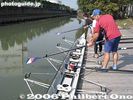
Inserting the oars into the outriggers.
|
|
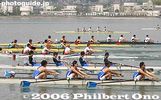
Close-up of rowers at Asahi Regatta
|
|

"Umi no Ko" (Child of the Lake) Lake Biwa training boatThe bow of Shiga Prefecture's "floating school." The name of this boat was obviously taken from the song. The boat is owned by Shiga Prefecture and used to educate elementary school kids about the lake. Since 1983, this ship has been serving as a floating school for kids where they stay overnight and spend two days conducting experiments to learn more about the lake. Picture was taken at Hikone Port.
|
|

Back of Verse 1 Song Monument, Otsu (Mihogasaki)Directions: From JR Otsu Station, take a bus to Mihogasaki. It's about 10 min. Or you can easily walk it from Hama-Otsu Station. Just walk on the main road toward the race boat arena. There will be a small marina on the right. Right after passing the marina, turn right into the small road. There will be a small park on the right. The monument is there. There are two stone monuments. It might be roped off and you're not supposed to enter the park. While you're there, walk around the marina and see the boathouse with the cherry blossom logo with three stripes. That's the logo of the school and the place where the boys left for the rowing trip in 1917. Otsu Station also has a tourist information office where you can obtain directions and a map.
|
|

On Karahashi Bridge
|
|

Hokule'a already in sight well before 11 am when it was scheduled to dock.
|
|

Boarding time at Imazu Port. In the forefront is a song monument for Biwako Shuko no Uta.
|
|

Seta-Karahashi Bridge, the start line.
|
|

Kyoto Univ.
|
|

Finish line.
|
|
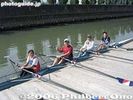
Ready to row on a "quad" sculling race boat. Each person rows with two oars.Sorry for the small image.
|
|

Cheering section
|
|

Race starts for Kyoto Univ. alumni
|
|

Hokule'a and escort ship Kama Hele. What makes this canoe so special and famous is that it was used to sail from Hawaii to Tahiti (and many other places) without any modern navigational instruments.
|
|

Megan and Jamie Thompson about to board the boat. トンプソン姉妹
|
|

Up to four rowing teams raced down a 250-meter straight course.
|
|

Preliminary heats were held on the first day.
|
|
|
|
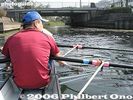
We now enter Lake Biwa.
|
|

High school spectators near the finish line
|
|

"Umi no Ko" (Child of the Lake) Lake Biwa training boat for kids
|
|

Near the Verse 1 Song Monument is another stone monument engraved with the words of the entire song.
|
|
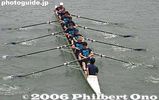
Kyoto Univ. alumni
|
|

They only referred to the sun, moon, the stars, and ocean waves to navigate through the vast Pacific Ocean or Polynesia. This is called celestial navigation. Extremely few people can do this, and the Hawaiians are learning this skill of long-ago.
|
|

Boat name "Rio Grande" operated by Biwako Kisen. Named after Shiga's sister state in Brazil. There is also the "Michigan" paddlewheel boat named after Shiga's sister state in the USA.
|
|
|
|

Coach with megaphone
|
|

The main boat type used was the "knuckle four," a boat developed in Japan for stability rather than speed. Good for beginners.
|
|
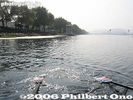
Lake Biwa Rowing Course operated by Shiga Prefecture for major rowing regattas. It is near the head of Seta River, and very near Seta Rowing Club.
|
|

Kyoto University's cheering section for the 8-man raceComplete with cheerleaders.
|
|

Kyoto Univ. starts to veer off course
|
|

They wanted to prove that the original native Hawaiians were able to sail between Tahiti to Hawaii on purpose, and that they did not land on Hawaii by accident.
|
|

Inside the front of the Rio Grande boat. 琵琶湖周航クルージング
|
|
|
|

Kyoto Univ.
|
|
|
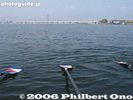
Oars keep the unstable boat stable.
|
|

Eight-man race
|
|

Small park where the Verse 1 monument is located.This monument is near the boat house in Mihogasaki, a stone's throw from Hama-Otsu. It was built in 1973 as the first monument for the song.
This little park is actually off-limits and you're not supposed to enter it, for some reason. On the left side of the picture is another stone monument hidden by brush. It is engraved with the entire song. In the background, you can see the roof of the boathouse.
|
|

Kyoto Univ. is unable to correct their misdirection
|
|

Hokule'a and Yokohama Bay Bridge in the background.
|
|

Open deck at the rear. The boat departed at about 11:30 am.
|
|

All the boats are held stationary with a rope provided from the bridge.
|
|

Exhausted rowers at finish line.
|
|

Awards ceremony was held from 2 pm after each final race was completed.
|
|

The oar handles overlap when you pull them. Often my hands bumped into each other.
|
|
|
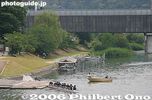
A faulty rudder runs them aground
|
|

One sail unraveled.
|
|

We passed by various scenic spots such as Shirahige Shrine, noted for the torii gate in the lake.
|
|
|

Winners of the preliminary heats advanced to the semi-finals held on the 3rd day (Aug. 26).
|
|

1st, 2nd, and 3rd place winning teams received a trophy, certificate, and Lake Biwa Rowing Song CD. The CD was donated by Philbert Ono.
|
|
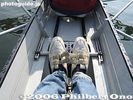
Shoes are fixed to a small, angled platform.
|
|

Kyoto Univ. comes in 3rd place
|
|

"Senzoku" means "wash feet." One legend says that Nichiren washed his feet in the pond.
|
|
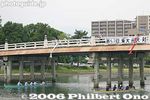
4-man crew alumni boat race
|
|

Nearing Pukari Sanbashi Pier. The question was, which side of the pier would it dock? (Was going the other side so I rushed over to the other side.)
|
|

Shirahige Shrine 白髭神社
|
|
|
|

Awards ceremony. The presenter is Shigeru Aoyama, the director of the Lake Biwa Rowing Course.
|
|
|

The area with the cherry trees is called Sakurayama.
|
|
|

Hokule'a nears the dock.
|
|
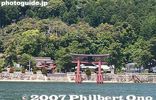
Shirahige Shrine torii as seen from the cruise boat.
|
|
|

The race course is filled with boats on the side practicing or rowing to the starting line.
|
|

Trophy for you.
|
|
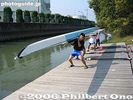
After a neat rowing trip, the boat is lifted out of the water.
|
|
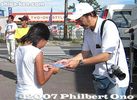
Lake Biwa Rowing Song CD presented to a winner. A CD was also presented to the regatta's youngest and oldest rower.
|
|

One end of Shakujii Park.
|
|

Starting line staff
|
|

Fishing boats at Horikiri Port
|
|
|
|

A rope is thrown to the dock from Hokule'a.
|
|

Omi-Maiko with green pines on white sands. 近江舞子の「松は緑に 砂白き」
|
|
|
|

Rinsing the shell with fresh water.
|
|

Shakujii Pond 石神井池
|
|

Empty rowboats too.
|
|
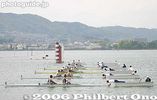
Starting line
|
|

Bentenjima, a small peninsula connected by a bridge.
|
|

8-man crew alumni in their 20s and 30s at starting line
|
|

Hokule'a arrives right on schedule at 11 am on June 9, 2007. Yokohama is its last stop.
|
|

Omi-Maiko appears in the song.
|
|

Most races were not close.
|
|

The Toda Boat Course is a perfectly straight body of fresh water stretching over 2000 meters.
|
|
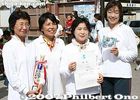
The BL Club C team placed 2nd in the Masters Women's Category. マスターズ女子の部 2位 BLクラブC
|
|

The boat is pencil-thin.
|
|

Swan boats on Shakujii Pond. 石神井公園
|
|
|

The pond is also depicted in woodblock prints such as by Hiroshige.
|
|
|

Hula dancers
|
|

Rolling with the waves
|
|
|

Kobe Univ. women rowers
|
|

The SAKURA team placed 2nd in the Family category. ファミリーの部 2位 SAKURA
|
|

Rinsing the oars.
|
|
|
|
|
|
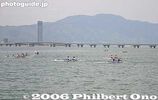
Two-man boat race
|
|

Kyodai alumni in their 20s and 30s
|
|

Conch shell blowers signal the canoe's arrival.
|
|
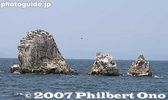
Okino-shiraishi Rocks, a favorite resting place for birds which turned the rocks white from bird droppings. Four rocks stand 80 meters deep in the lake. Out of the water, the tallest stands 14 meters high. 沖の白石
|
|

The 250-meter course is very short, and each race ends within a minute or two.
|
|

Shiga Univ. cox at Toda Boat Course
|
|

3rd place winner in the Masters Men's Category. マスターズ男子の部 3位 大歯大松籟会B
|
|
|
|
|
|
|

Cheering/coaching from bicycle
|
|
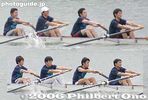
Kyodai alumni in their 20s and 30s
|
|

Pulling Hawaii's most famous canoe to dock.
|
|

So what does "Coral shrine" mean in the song? (There's no coral in the lake.) "I think it just refers to a beautiful place..." 「珊瑚の宮」はどういう意味?
|
|

Finish line. In the background is the Kyoto University Rowing Club's boat house.
|
|

Shiga University women rowers
|
|

The BL Club B team placed 2nd in the Women's Category. 一般女子の部 2位 BLクラブB
|
|
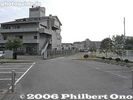
Entrance and road to the rowing clubhouse
|
|

Shakujii Pond 石神井池
|
|

Rowboats and low-hanging cherries.
|
|

Cheering/coaching on foot
|
|
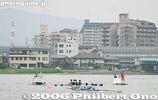
One of the main events, the 4-man boat race between Todai and Kyodai on a 3200-meter course.
|
|

Under overcast skies, Hokule'a docks.
|
|

We landed on Chikubushima for about an hour. Jamie and Megan also sang in English in front of the Verse 4 song monument.
|
|
|
|

The Shiga University Education Dept. B team placed 3rd in the Women's Category. 一般女子の部 3位 滋賀大教育B
|
|
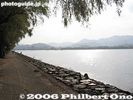
Near the rowing club is the Lake Biwa Rowing Course where regattas are held. 滋賀県立琵琶湖漕艇場
|
|
|

Bridge to Bentenjima.
|
|

Todai's 4-man crew in the lead
|
|
|

Jamie and Megan Thompson sing in English in front of the Verse 4 song monument, Chikubushima. Next time we need to have an amplifier.
|
|

The race had to be stopped for a few minutes each time this cruise boat passed by.
|
|
|
|

Writing the winning team's name on the award certificate (one per team). Students from Doshisha University Rowing Club served as volunteer staff.
|
|
|
|

Awards ceremony
|
|

Kyodai's 4-man crew try to keep up
|
|

Escort ship (powered by a Yanmar engine) Kama Hele also docks soon afterward.
|
|

Jamie and Megan Thompson sing in English in front of the Verse 4 song monument, Chikubushima. They sang up to Verse 4. ジェイミーとメゲン・トンプソン姉妹が歌う
|
|

The Lake Biwa rowing Song CD was also sold.
|
|

Shiga Univ. banners
|
|

Sports Masters poster. The annual Sports Masters national competition was held in Shiga in 2007. This regatta was a supporting event instead of an official competition.
|
|

Verse 2 Song Monument, Omi-Maiko (Omatsu). On the lake shore in Omi-Maiko (Omatsu) behind Hotel Biwa Lake Otsuka. Built in March 1989. 二番の歌碑。近江舞子(ホテル琵琶レイクオーツカの前)Pine trees are very green, on sands very white.
Omatsugasato is, a young maiden's home.
Bush of red camellia, hides her teary face.
She's weeping o'er a lost love, much too short to last.
Matsu wa midori ni, suna shiroki
Omatsugasato no, otomego wa
Akai tsubaki no, morikage ni
Hakanai koi ni, naku toka ya
松は緑に 砂白き
雄松が里の 乙女子は
赤い椿の 森蔭に
|
|
|
|

How it looks from the end of the moat.
|
|

Boat landing
|
|

Mihogasaki harbor, Otsu. The arrow points to the boat house where Oguchi Taro and crew departed for their rowing trips.Mihogasaki is accessible by bus from Otsu Station. Or just walk west from Hama-Otsu. This is also where water from the lake is drawn into the Biwako Canal's first canal which feeds water to Kyoto.
|
|

Old photo of Verse 2 Song Monument in Omi-Maiko. The tree was cut down and lyrics later painted white.
|
|

Todai's 4-man crew rowing
|
|

Koinobori carp streamers adorn Hokule'a. A great Japanese touch.
|
|

The man holds the 90th Anniversary tour sign as a guide for the tour guests.
|
|
|
|

Only one bridge (for pedestrians only) spans over the course at the 500-meter line.
|
|

Lake Biwa Rowing Course clubhouse, in front of which the awards ceremony was held. It is next to the finish line. The facillity is operated by Shiga Prefecture.
|
|
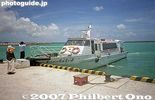
Taketomi Port boat for Ishigaki
|
|
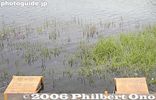
Temporary boat landing
|
|

How it looks from the end of the moat.
|
|

Kyodai's 4-man crew rowing
|
|
|

Getting back on the boat. Little over a hundred people came on this cruise. If people knew it was gonna be such a beautiful day during this rainy season, more would have certainly come.
|
|

The Lake Biwa rowing Song CD was also sold during the regatta which lasted from 9 am to 4 pm.
|
|
|

Lake Biwa Rowing Course boathouse
|
|

Verse 2 monument is on the lake shore, in front of Hotel Biwa Lake Otsuka, near what appears to be a boat pier. Short walk from Omi-Maiko Station.Directions: Near Omi-Maiko Station on the JR Kosei Line. After exiting the station, walk left toward Kitahama. Then get to the lake shore and walk along the lakeshore road until you see the monument under a large tree right on the shore. It is in front of Hotel Biwa Lake Otsuka.
|
|
|

Carrying the boat back
|
|
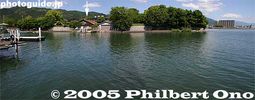
Mihogasaki harbor, Otsu. The arrow points to the boat house.
|
|

Kyodai's 4-man crew rowing with dark-blue blades
|
|

Escort ship Kama Hele flying the Japanese, Hawaiian, and Yanmar flags at Yokohama.
|
|

Sachiko Tsuji, the MC, interviews the sisters before they sang on the boat. 自動販売機前でインタービュー。船内の客は姉妹の顔や姿がほとんど見えへん。
|
|

CDs
|
|

Whenever a race is proceeding, the boats in the side lane keep still.
|
|

Lake Biwa Rowing Course boathouse
|
|

This is where the path around the lake ends.
|
|

Todai won this one.
|
|
| 1682 files on 7 page(s) |
1 |
 |
 |
 |
 |
|